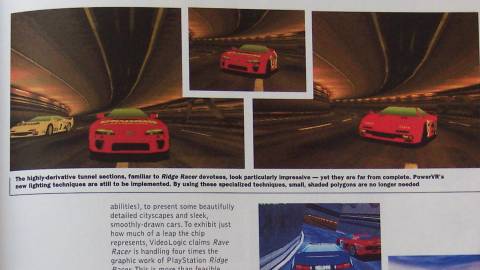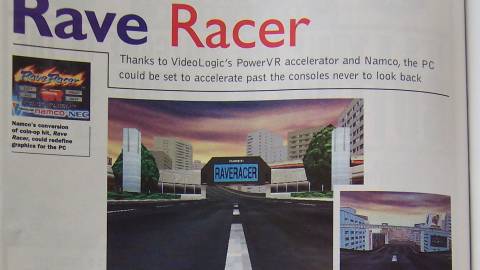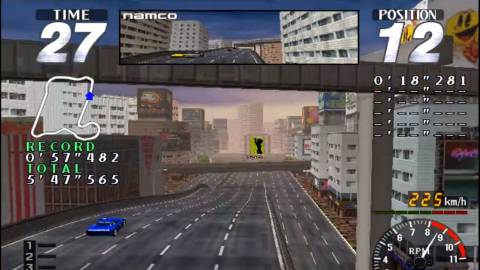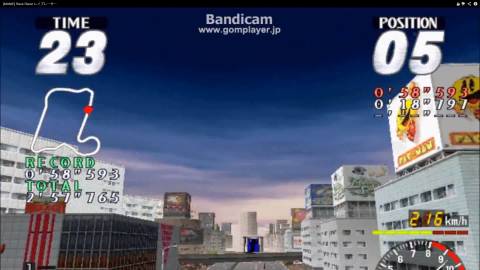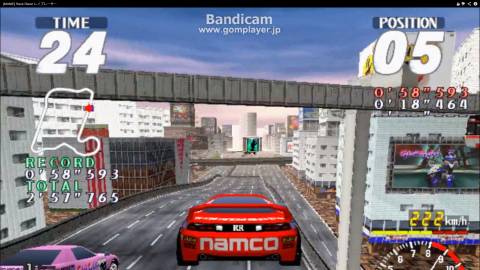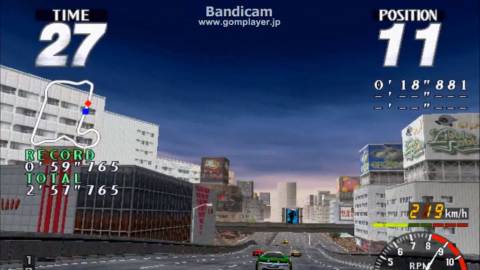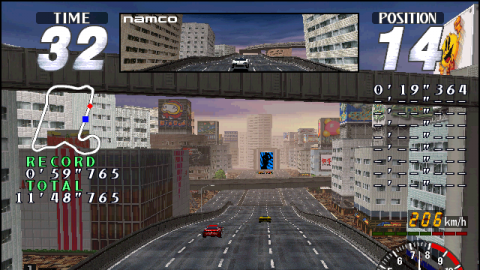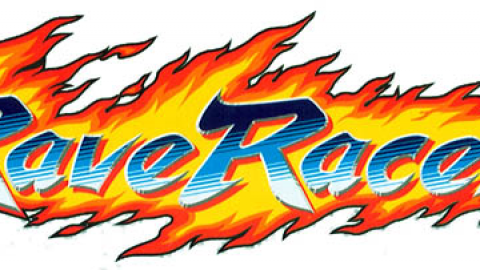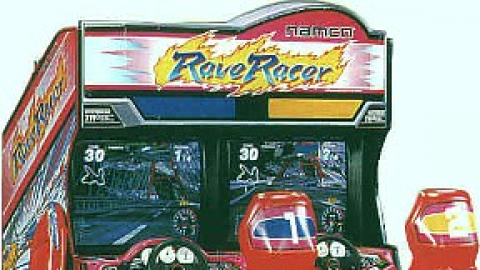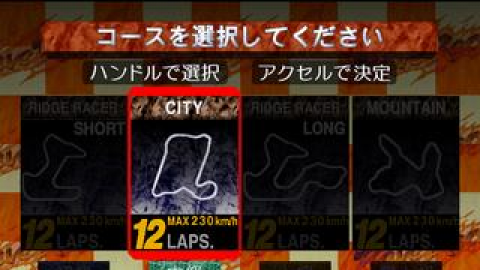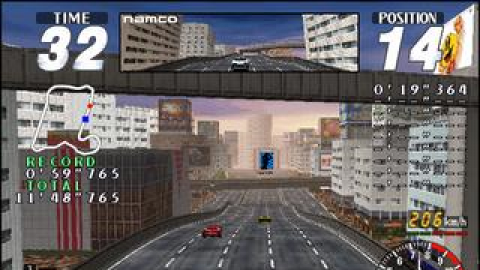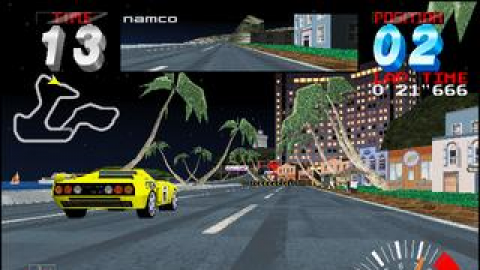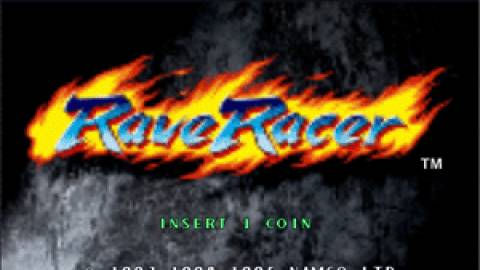Overview
Rave Racer is an arcade sequel to the original Ridge Racer that has never been released on another platform. Unlike the previous arcade installments of the Ridge Racer series (Ridge Racer and its update Ridge Racer 2), Rave Racer introduces two unique courses (for a total of four courses), a new announcer, and scraps the previous soundtrack for an all-new one. This is also the first Ridge Racer in which the courses aren't all physically connected to one another.
Running on the powerful Namco System 22 arcade hardware, Rave Racer pushed the boundaries of 3D polygon graphics technology. Building on its predecessor Ridge Racer (the first game to use 3D texture-mapping), Rave Racer was the first video game to use high resolution 3D texture mapping, applying high resolution textures to 3D polygons. This gave the textures a level of detail unrivalled by any home systems until the release of the Sega Dreamcast in 1998. Like its predecessor, the game ran at a high resolution of 640 x 480 pixels, at a full 60 frames per second.
Namco System 22 hardware specifications
Main article: Namco System 22
The technical specifications for the 32-bit Namco System 22 arcade hardware running the game:
- Main CPU (Central Processing Unit) processor: Motorola 68EC020 @ 25 MHz
- Instruction performance: 7.5 MIPS (Million Instructions Per Second)
- Floating-point performance: 0.19 MFLOPS (Million Floating-point Operations Per Second)
- + Custom Namco chips
Graphics
- Main GPU (Graphics Processing Unit) processor: Evans & Sutherland TR3 chipset
- DSP (Digital Signal Processing) GPU processors: 2x TI TMS32025 (16/32-bit) @ 49.2 MHz
- Performance: 64 MIPS (32 MIPS each)
- Floating point performance: 400 MFLOPS
- Polygon performance: More than 240,000 polygons per second
- Features: Texture mapping, Gouraud shading, transparency, translucency effects, Z-buffering, depth cueing, high-resolution textures
- Display: 640x480 resolution @ 60 fps (frames per second) frame rate
- Colour: 16.78 million colours (24-bit colour) on screen
Sound
- Sound CPU: 2x Namco C74 (based on 16-bit Mitsubishi M37702) @ 16.4 MHz
- Sound chip: Namco C352 @ 16.4 MHz
- Features: 32-channel, 8-bit PCM @ 42 KHz
- Audio output: Stereo (standard), 4-channel Bose surround (deluxe)
Other specifications
- Monitor: 33-inch (standard), 50-inch (deluxe)
- Controls: Wheel (force feedback), Shifter (six positions), Mazda MX-5 (full-scale deluxe version)
- Pedals: Acceleration, Brake, Clutch
Cancelled PC port
The game was never ported to consoles, which may have been due to the PlayStation not being powerful enough at the time. Instead, the PlayStation received an alternative Ridge Racer sequel, Ridge Racer Revolution.
In early 1996, a PC port of Rave Racer was announced as a launch title for NEC's PowerVR graphics accelerator card. Early demos of the PC port showed that, while the frame rate was halved (from 60 down to 30 frames per second), the graphical quality was much closer to the arcade game than the PlayStation port of Ridge Racer was, with the PowerVR able to reproduce much of the arcade game's shading and texturing capabilities (though texture resolutions may have been slightly reduced). This port of Rave Racer was considered the best-looking 3D game on the PC up until that time. However, the PC port was later cancelled. Nevertheless, the game's PC demo played a key role in showcasing the power of the PowerVR accelerator card and demonstrating the potential of 3D graphics cards on the PC platform.
References in Later Titles
Despite never being released on a console or handheld, Rave Racer's two exclusive courses, City and Mountain, eventually received adaptions in the PSP Ridge Racer titles and are named ''Midtown Expressway'' and ''Greenpeak Highlands''. Some of Rave Racer's music also appears in those titles in either its original form or as a remixed theme.
Later Ridge Racer titles also received derivative courses that run through part of Rave Racer's city course, and may even have the word ''Rave'' in the course's name. (such as ''Downtown Rave City'' which debuts in Ridge Racer for PSP and reappears in Ridge Racer 6.)
Lastly, and while this may or may not be an intentional reference, Rave Racer's version of Ridge Racer's Expert/Long course has a few parallels with the version that would not exist until the eventually-released Ridge Racer V -- Both these versions differ from the original Ridge Racer version in that the body of water that was visible beyond the final corner has been replaced with city buildings. Also possibly worth noting is the way the construction work in Rave Racer's version of this course, when compared to Ridge Racer, seems to have drawn much closer toward completion -- bridging the gap, in a sense, towards Ridge Racer V's version, in which all construction has already been complete. Lastly, there's the curious fact that Ridge Racer V's version of this course is named Green Field, despite barely having any green in it, whereas the same course in Rave Racer is saturated in grass and dotted with trees.

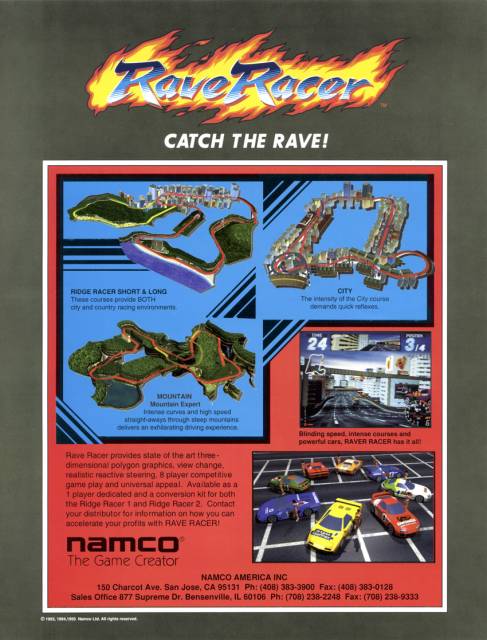
 Arcade
Arcade